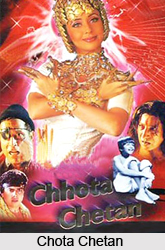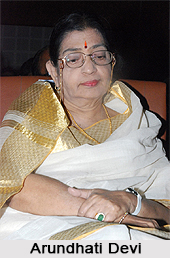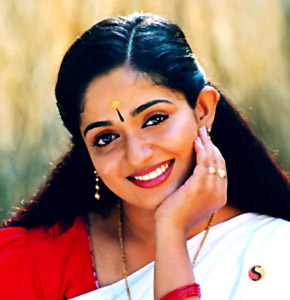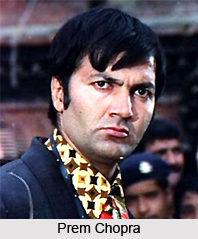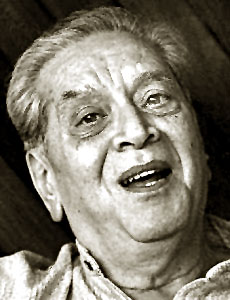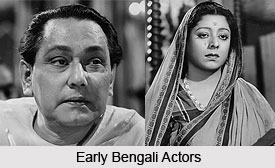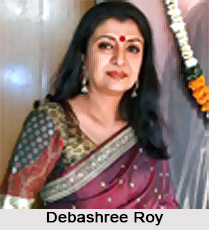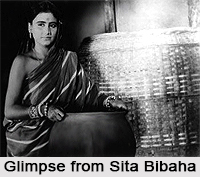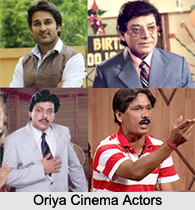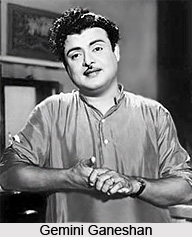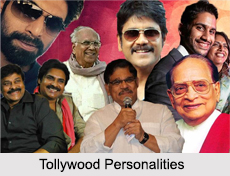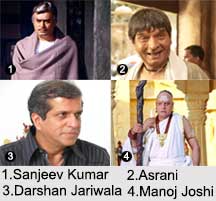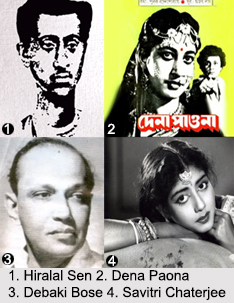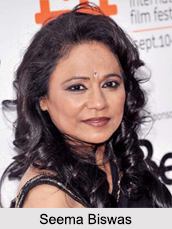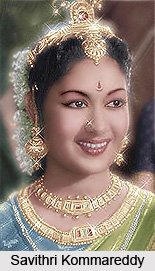 Kundan Lal Saigal, He was an exceptionally good singer and an excellent actor. K.L. Saigal was the first artist to be considered as the `Superstar` of Bollywood. Throughout his career of fifteen years, Kundan Lal Sehgal acted in 36 feature films, twenty-eight Hindi/Urdu, seven Bengali and one Tamil. He has rendered 185 songs in his entire career, which include 142 film songs and 43 non-film songs.
Kundan Lal Saigal, He was an exceptionally good singer and an excellent actor. K.L. Saigal was the first artist to be considered as the `Superstar` of Bollywood. Throughout his career of fifteen years, Kundan Lal Sehgal acted in 36 feature films, twenty-eight Hindi/Urdu, seven Bengali and one Tamil. He has rendered 185 songs in his entire career, which include 142 film songs and 43 non-film songs.
This eminent actor, singer was born on 11th April 1904 at Nawa Shahar in Jammu, India. The place in the present day located in Jammu & Kashmir. He is originally from the city of Jalandhar in Punjab. He had an uneventful and brief formal schooling. He was very much influenced by his mother who used to sing Punjabi religious bhajans. His wife`s name was Asha Rani whom he married in 1935. Saigal had a son named Madan Mohan and two daughters named Nina and Bina. Saigal died in his ancestral city of Jalandhar on January 18, 1947, at the age of 42 due to alcoholism. Unfortunately, none of his family members are now alive. His wife and son expired in 1978 and 1981 respectively while the daughters expired on 15th April 2000 at Bombay and 31st October 2001 in Delhi respectively.
Saigal`s initial performance was at the age of 12 in the Darbar of Maharaja Prathap Singh. Later he left home and took up various jobs in order to earn a living. He started earning money by working as a railway timekeeper. Later, he worked as a typewriter salesman for the Remington Typewriter Company, which allowed him to tour several parts of India. He also briefly worked as a hotel manager. Meanwhile, his passion for singing continued and became more intense with the passage of time.
In the early 1930s, he joined the Calcutta Based film studio, New Theatres and Saigal was employed on a contract basis of Rs. 200/month.. In 1932, his visit to Kolkata for an official matter was a turning point in his life. There he met the famous film and highly respected music director R.C.Boral of the pioneering film company and he gave a chance for Saigal. In a short span of time, he stood tallest among other contemporaries like Pankaj Mullick, K.C. Dey and Pahari Sanyal with his brilliant singing and popularity.
The first film in which Saigal had a role was the Urdu film "Mohabbat Ke Ansoo". It followed by Subah Ka Sitara and Zinda Laash, all released in 1932. However, these films did not do very well. It was his four bhajans for R.C.Boral`s songs in the film Puran Bhagat in 1933, created a sensation throughout India. The songs of this film attracted the music lovers in India. Thereafter Saigal never looked back. Films that followed were "Yahudi Ki Ladki", "Chandidas" and "Rooplekha". As a youngster, India`s melody queen herself, Lata Mangeshkar, is pleaded to have said that she wanted to marry K.L. Saigal after seeing his performance in "Chandidas".
He became popular as an actor after releasing the film `Devdas` in 1935. Saigal played the role that of the drunken title character in "Devdas" based on Sarat Chandra Chattopadhyay`s novel of the same name, which would come to define his acting career. The film was directed by P.C. Barua. His songs in the film, `Balam Aaye Baso Moray Man Mein` and `Dukh Ke Ab Din Beetat Naahi`, became frenziedly popular throughout the country.
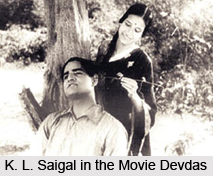 There are a number of immortal songs of this era. Thus it led to form the rich heritage of film music in India. Saigal`s association with New Theatres continued to bear fruit in subsequent films that became all the rage, which created success after success with films such as Didi (Bengali)/President (Hindi) in 1937, Saathi (Bengali)/Street Singer (Hindi) in 1938, and Zindagi in 1940, with Saigal in the male lead. These films were extended beyond the limit by audiences mainly for Saigal`s songs. Also, it is well-known that in Street Singer, Saigal rendered the song `Babul Mora` live in front of the camera, even though playback was becoming the preferred method of singing songs in films.
Rabindranath Tagore first heard Saigal before giving consent for the first time to a non-Bengali singing his songs. Saigal picked up Bengali very well. He even acted in seven Bengali films, produced by New Theatres. Saigal made himself beloved to the whole of Bengal through his 30 Bengali songs.
There are a number of immortal songs of this era. Thus it led to form the rich heritage of film music in India. Saigal`s association with New Theatres continued to bear fruit in subsequent films that became all the rage, which created success after success with films such as Didi (Bengali)/President (Hindi) in 1937, Saathi (Bengali)/Street Singer (Hindi) in 1938, and Zindagi in 1940, with Saigal in the male lead. These films were extended beyond the limit by audiences mainly for Saigal`s songs. Also, it is well-known that in Street Singer, Saigal rendered the song `Babul Mora` live in front of the camera, even though playback was becoming the preferred method of singing songs in films.
Rabindranath Tagore first heard Saigal before giving consent for the first time to a non-Bengali singing his songs. Saigal picked up Bengali very well. He even acted in seven Bengali films, produced by New Theatres. Saigal made himself beloved to the whole of Bengal through his 30 Bengali songs.
His association with the famous film producer and director Chandulal Shah in 1941 gave him a chance to enter the Hindi film world. Saigal moved to Bombay to work with Ranjit Movietone. Here he acted and sung in a number of hit films. His voice, music and songs took him to even greater heights. "Bhakt Surdas" in 1942 and "Tansen" in 1943 were huge hits during this period. The film "Tansen" is still remembered for Saigal`s amazing performance of the song `Diya Jalao` in Raga Deepak. In 1944, he returned to New Theatres to complete Meri Behen. This film contained such Saigal gems as Do Naina Matware and Ae Qatib-e-Taqdeer Mujhe Itna Bata De.
By this time, his dependence on alcohol and begun affecting his work and his health. It was said that he could only record a song after having being fortified with liquor. Alcohol had become a predominant factor in Saigal`s life. He survived ten years of drinking, however, his alcoholism was too advanced for even a single attempt at abstinence. However, before his death, he was able to whip out three more hits under the baton of Naushad for the film "Shahjehan" in 1946. These are `Mere Sapnon Ki Rani`, `Ae Dil-e-Beqaraar Jhoom`, and of course, the immortal `Jab Dil Hi Toot Gaya`. He released his last film, "Parwana" in 1947.
In a career of fifteen years, Saigal acted in 36 feature films - 28 in Hindi/Urdu, 7 in Bengali, and 1 in Tamil. In addition, he acted in a short comedy Hindi/Urdu film, "Dulari Bibi" (3 reels), released in 1933. B.N. Sircar released a documentary film called "Amar Saigal" in 1955, after Saigal`s death based on the life and times of K.L. Saigal. In the film, G. Mungheri performed the title role of Saigal. The film contained 19 songs lifted from Saigal`s films. In all, Saigal rendered 185 songs which includes 142 film songs and 43 non-film songs. In the film songs category, there are 110 in Hindi/Urdu, 30 in Bengali and 2 in Tamil. In the non-film category, there are 37 in Hindi/Urdu, and 2 each in Bengali, Punjabi and Persian. His non-film songs comprise of Bhajans, Ghazals and Hori. He has rendered the creations of legendary poets such as Ghalib, Zauq, Seemab and others.
K.L.Saigal was idolized by the first generation of post-independence that Bollywood playback singers, including Lata Mangeshkar, Mohammad Rafi, Mukesh, and Kishore Kumar by his distinctive singing voice which was so melodious and popular. Even today, the name K.L. Saigal conjures up images of the great Indian singing film star of the 1930s and 1940s with the unmatched golden voice.
